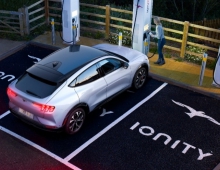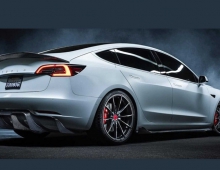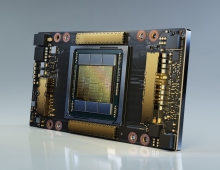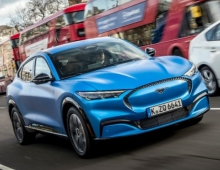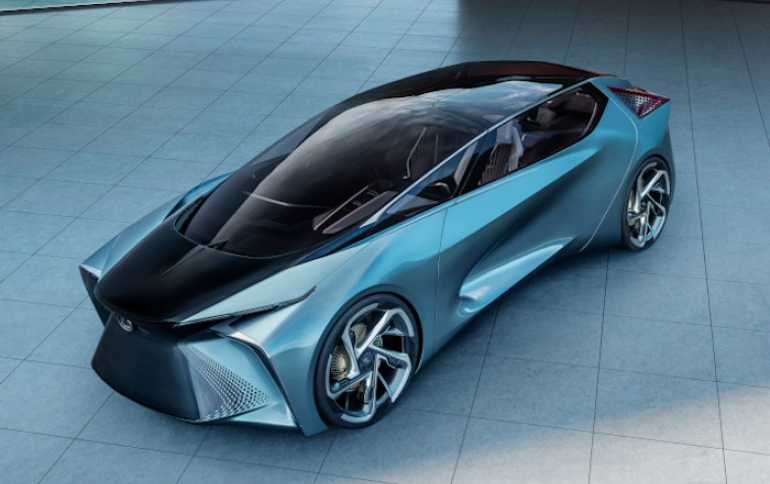
Toyota Showcases the Futuristic Lexus LF-30 Concept
Lexus unveiled its "Lexus Electrified" vision for an upcoming generation of electrified vehicles, and will debut the Lexus LF-30 Electrified Concept at the Tokyo Motor Show.
At the unveiling of a concept model of a futuristic EV hatchback ahead of the Tokyo Motor Show, he added that the goal is for sales of Lexus electric vehicles, including battery electrics and gasoline hybrids, to outpace sales of the luxury brand’s gasoline vehicle models by 2025.
The Lexus model will be Toyota’s first full-sized, battery operated passenger car as the Japanese automaker catches up with rivals, including Nissan Motor Co and Tesla Inc , which have marketed battery EVs for years.
The "Lexus Electrified" vision unveiled today targets a fundamental leap in vehicle performance, handling, control and driver enjoyment―even as mobility within our society continues to change with autonomous driving and vehicle electrification.
Lexus is drawing on the lessons learned developing the core technologies found in Lexus' popular range of gasoline-electric hybrids, including battery management, power control modules, and electric motors. In particular, the technology of Lexus Electrified enables integrated control of powertrain, steering, suspension, and brakes, realizing the potential of the motor control technology cultivated in HV.
Lexus plans to unveil its first BEV in November 2019―broadening our response to the needs of various regions around the world, including the development of HEVs, PHEVs, BEVs, and FCEVs. Moving forward after that, Lexus plans to expand its electrified vehicle lineup―we will launch our first Lexus PHEV and a new dedicated BEV platform early in the coming decade. By 2025, Lexus will have available electrified versions of all Lexus vehicle models, and aims for the sales of electrified vehicle models to outpace those of conventional internal combustion engine vehicle models.
The LF-30 Electrified concept vehicle has a futuristic form and an interior that assertively weaves in autonomous driving and other new technologies. Precise electric motor control enables instantaneous adjustments to posture not possible with conventional vehicles. Furthermore, the LF-30 Electrified employs numerous advanced technologies with a look ahead to the year 2030- such as a new-concept cockpit based on a human-centered design philosophy and a steer-by-wire system.
Taking advantage of a hoodless vehicle shape made possible by being a BEV, Lexus' signature "spindle" form has been further evolved to span the entire vehicle architecture. The window glass, which continually stretches from the front to rear, the muscular fenders, and the wing-shaped headlights form the contours of the Lexus iconic spindle. In addition to the wing-shaped headlights, the sharpness of the rear lights and side air intakes combine to achieve both excellent aerodynamics and cooling performance.
The color of the front face of the vehicle and luminescence patterns help identify from the outside whether the vehicle is being operated in its normal mode or in its autonomous driving mode.
The steering controller-mounted switches and head-up display are creating a space that enables the driver to focus on driving while controlling various functions, such as the navigation and audio system and driving-mode selection, without having to shift one's vision or operate manual switches.
The LF-30 Electrified employs next-generation interfaces, such as gesture control and enhanced presentation of vehicle information through AR (augmented reality).
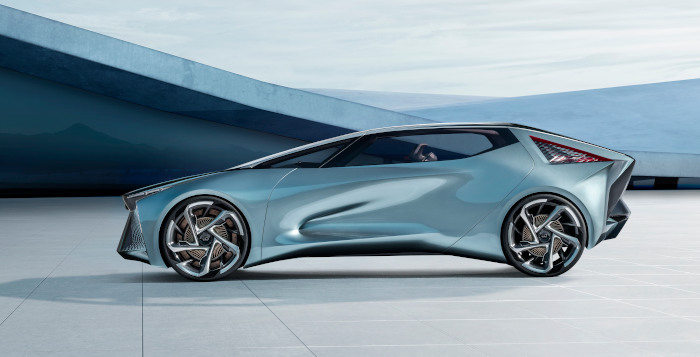

The rear seats use artificial muscle technology to mold to their occupant, and can support various modes such as reclining, relaxation, and alert functions. A Mark Levinson audio system creates a listening environment, and speakers built into the headrests not only provide an optimal audio environment but also have a noise-cancelling feature.
A glass roof above the rear seats features voice control and a gesture controlled "SkyGate" display window that uses AR to display various types of information, such as a realistic star-filled sky, user-favorite videos, and even navigation.
Yakisugi (charred cedar), a traditional Japanese material, is used in the floor and steering controller while recycled metal was processed into fibers for use in creating the pleated door trim.
The LF-30 employs numerous technologies. In-wheel electric motors for each of the vehicle's four wheels and low positioning of the battery enable better handling of inertia and high-level driving performance. Autonomous driving technologies and drone support vehicle technologies look ahead to the year 2030.
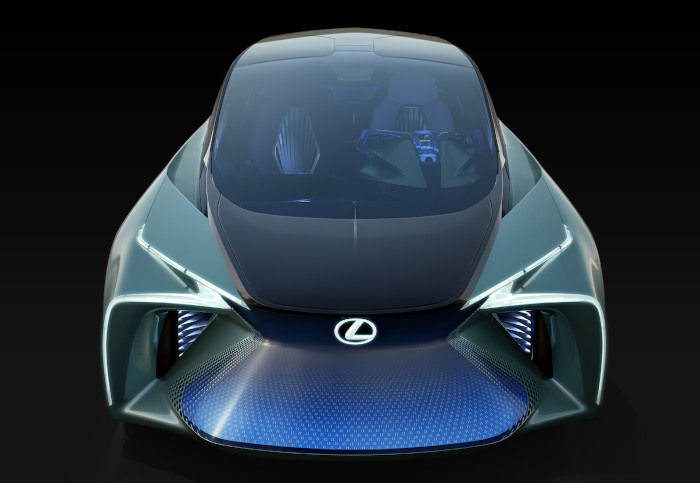
Lexus Advanced Posture Control technology regulates the drive-power output from high-torque electric motors. Completely independent control of front and rear drive wheels allows appropriate provision of front-wheel drive, rear-wheel drive, and all-wheel drive, depending on the driving situation. Compact and lightweight drive-power units expand freedom in vehicle packaging and are used to enable the driver to enjoy ideal driving, regardless of the road surface or driving conditions.
Positioning Lexus Advanced Posture Control technology as a core element of the 'Lexus Electrified' vision, Lexus intends to widely apply this technology throughout its lineup of electrified vehicles.
The steer-by-wire system eliminates a mechanical connection to allow more flexible turning control depending on driving conditions, and a more precise steering feel aligned with the driver's intention. It also contributes to a greater sense of openness by allowing the steering controller can be shifted forward and out of the way during autonomous driving.
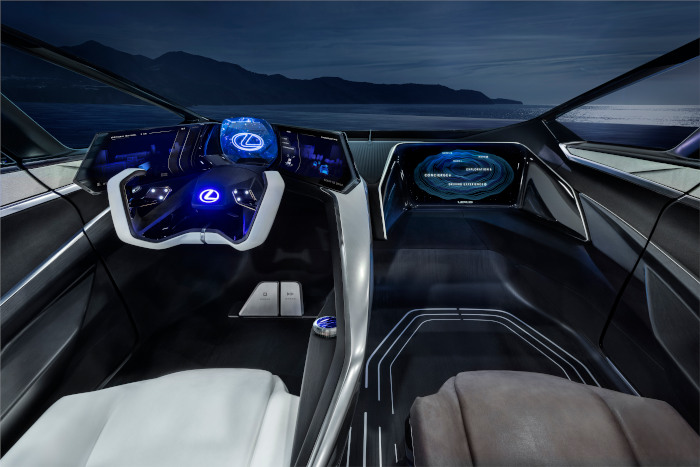
As a next-generation BEV, LF-30 uses wireless charging technology to simplify daily charging, and AI-based energy management to enable optimal distribution of electric power to both the vehicle and the home, and charging control coordinated with the user's daily schedule.
Onboard AI distinguishes the voices of vehicle occupants, and uses personalized information stored on the driver's control key to serve as a partner. It facilitates the adjustment of elements of the interior environment, such as air temperature and audio, and the setting of navigation routes and destinations, while also making proposals for activities after arrival. It also understands driver's preferences and helps them control the suspension and powertrain settings in real-time according to the driving scene.
The LF-30 Electrified also carries the 'Lexus Airporter' drone-technology support vehicle. Using autonomous control, the Lexus Airporter is capable of such tasks as independently transporting baggage from a household doorstep to the vehicle's luggage area.
Based on the latest autonomous driving technology concept of 'Lexus Teammate', the LF-30 Electrified features advanced driving support functions in the form of a Chauffeur mode and a Guardian mode. Occupants can enjoy both comfort and peace of mind during autonomous driving with advanced posture control technology being employed. Furthermore, a self-parking function and a front-door pickup function in which the LF-30 Electrified autonomously moves from driveway to doorstep provide convenience.
Lexus LF-30 Electrified main specifications
- Length (mm) 5,090
- Width (mm) 1,995
- Height (mm) 1,600
- Wheelbase (mm) 3,200
- Weight (kg) 2,400
- Cruising distance [WLTP] (km) 500
- Battery capacity (kWh) 110
- Charging speed (kW) 150
- 0-100 km/h acceleration (seconds) 3.8
- Maximum speed (km/h) 200
- Max. output (kW) / max. torque (Nm) 400 / 700


